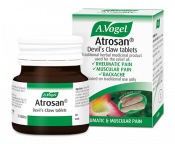Sore muscles after exercise
A stint of exercise, particularly if you are new to the activity, can make the muscles stiff and sore. This is known as Delayed Onset Muscle Soreness (DOMS) and is a normal part of sport. There are a few instances where DOMS is more likely to occur:
- When doing a new sport
- When doing a more intense workout than usual
- When exercising for the first time in a while
- When exercising continuously
DOMS occurs as a result of tiny tears to the muscles and is more common in these instances as the muscles are forced to work in a new way.

Should you still workout if you are sore?
The best thing you can do after exercise is rest as this gives the muscles time to recover. Returning to sport when you are experiencing DOMS will likely lead to poor performance and more severe aches and pains.
As part of your recovery period, you may find a warm bath helpful. This has a relaxing effect on the muscles, particularly if you throw in some natural bath salts.
How do you relieve DOMS?
A relaxing massage can also be of benefit when you are experiencing DOMS as it works to reduce muscle tension and pain. A sports massage is preferable as these specialists are trained to deal with sports-related injury or pain.
Magnesium is another thing that can be helpful post-workout as we lose vitamins and minerals during exercise that need to be replaced. Magnesium is particularly important, though, because it has a relaxing effect on the muscles.
For a healthy dose of magnesium you could try our Balance Mineral Drink. This is ideal after exercise as it helps to support normal muscle function, plus it fights tiredness and fatigue. What’s more, Balance contains zinc, calcium, vitamin D and potassium so helps to replace other minerals that may have been lost through sport.
My Top Tip:
|
Is DOMS a good sign?
When the muscles are forced to work in a new way they can experience damage and this is what results in DOMS. As the muscles repair and recover, however, they also build strength and so DOMS could actually be a sign of your improving fitness.
The more you persist with a workout, the less pain you should feel as the muscles gradually get used to the exercise.
Despite this, if you are experiencing severe pain and swelling, or are becoming reliant on painkillers to get through the day pain-free, it is definitely time to visit your doctor for further advice.
How long should DOMS last?
DOMS is usually at its worse 1-2 days after exercise but the good news is the problem tends to subside fairly quickly – around 4 days after the activity.1
This recovery period, as well as the severity of your muscle pain, will vary depending on how intense the activity was and how familiar you are to it. If you are new to a particular exercise class, for example, you are much more likely to experience sore muscles, and for a longer period of time, than those who have attended regularly for months.
In general, the more unfamiliar you are to an activity, and the more intense it is, the more damage to the muscles will be seen and thus the longer the pain will be felt.

How to prevent DOMS
There are a number of things you can do to prevent DOMS in future workouts:
- Start small - if you want to try out a new activity, start by doing it in small amounts and then gradually increase this until you have a workout you are happy with. This should avoid putting the muscles under too much strain too quickly
- Warm up before exercise – stretching loosens the muscles up and may help to reduce the chance of injury
- Allow for a rest period – you are more likely to experience DOMS if you do a few workouts in a row
- Do a variety of activities – this will prevent the same muscles being put under strain time and time again, plus if you do experience DOMS it will give the painful areas time to recover.





 Pour one sachet of Balance Mineral Drink into a glass containing 150ml of water or milk and then stir well. The drink has a natural strawberry flavour so is both refreshing and tasty!
Pour one sachet of Balance Mineral Drink into a glass containing 150ml of water or milk and then stir well. The drink has a natural strawberry flavour so is both refreshing and tasty!


